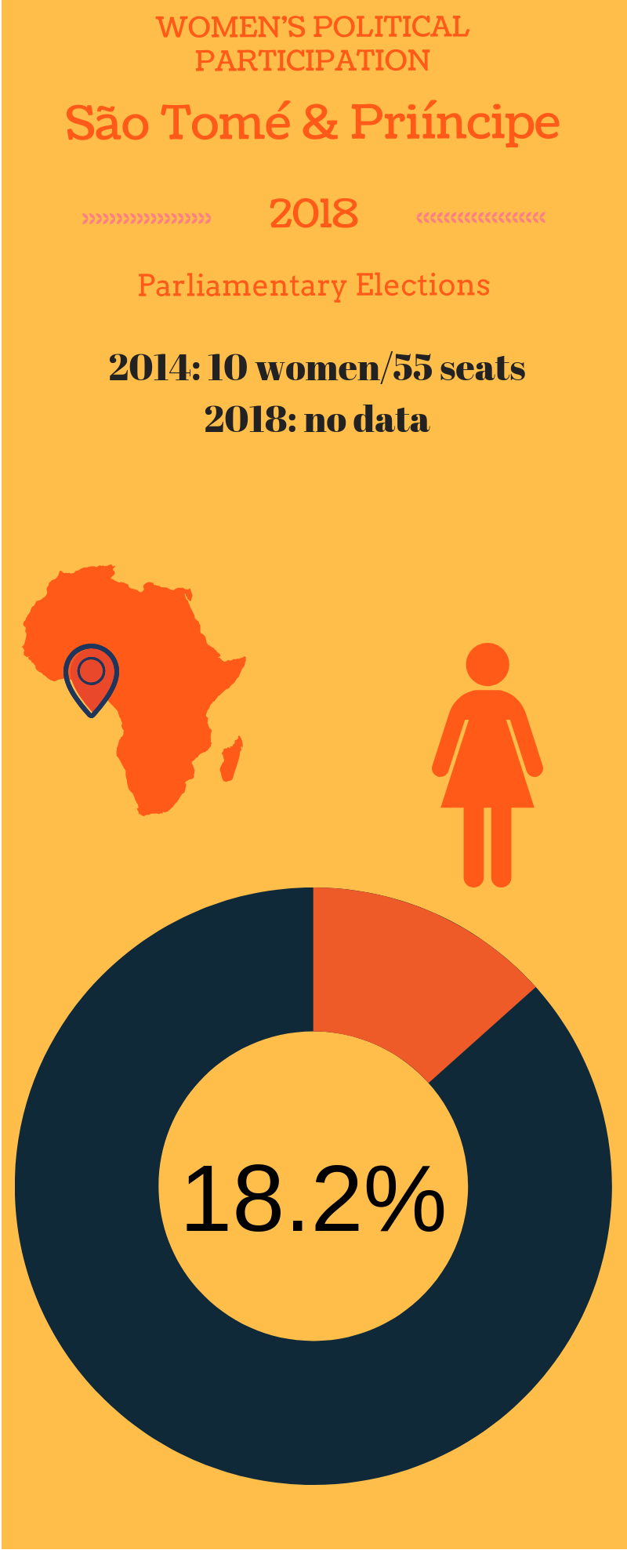Parliamentary elections were held in São Tomé and Príncipe (STP) on October 7, 2018. Results were disputed and protests targeted the Electoral Commission.
However final results were released by the Constitutional Court less than a week later. This upheld the initial results: the governing party, Independent Democratic Action (ADI) won 25 seats and the main opposition (MLSTP-PSD) won 23 seats. In order to govern the ADI will be forced to seek coalition partners with the smaller parties that took a handful of seats, since they have lost their majority.
São Tomé and Príncipe is a unicameral parliamentary democracy with a 55 seat National Assembly, elected by popular vote every four years. STP has a generally stable track record of holding peaceful and fair elections since its liberalization from a one-party state to a multi-party democracy in 1990.
There is no gender quota enacted in São Tomé and Príncipe, however in the 2014 Legislative Elections the government announced a benchmark goal to have 30% women in the National Assembly. STP is a signatory to the Maputo Protocol and has ratified CEDAW. At this time, gender-disaggregated data has not been released for the October 2018 election, making it challenging to ascertain how many female candidates ran or won.
Women’s Political Participation
Data is still forthcoming on women’s participation in the 2018 election. However, in 2014, women won ten out of the 55 available seats in the parliamentary election. Since 1990 women have had minimal but periodic representation in Santomean politics.
In 1991 and 1994, women were the Speakers of the National Assembly. While currently all major party leaders are men, one of the vice presidents of the MLSTP party, Elsa Pinto, formerly held the positions of Defence Minister and Minister of Justice. She ran for leadership of the party in 2015 and lost; Ms. Pinto, along with Maria des Neves (also of the MLSTP), are two of the most prominent female politicians in the country. Ms. des Neves served as the country’s first woman Prime Minister from 2002-2004 and placed third in the 2016 Presidential Election. Prior to its first openly contested election in 1990, São Tomé had a female chair of parliament in 1980. From 2004 to 2014 there has been a doubling of women holding seats in parliament (from 5 to 10 seats), with STP sitting at 18.2% of women in parliament. This falls below the regional average of 23.7% of women in parliament.
Gender equality and women’s ability to inherit (including female farmer’s ability to inherit and hold their own land), are both guaranteed under the Constitution of São Tomé and Príncipe. While rape, including spousal rape, and domestic violence is illegal, it is rarely prosecuted . UN Women has found that approximately 28% of women in STP report sexual based or intimate partner violence. The Social Security Law enshrines women’s right to sixty days of maternity leave.
Although this election was generally considered fair and free, protests did occur in the capital over alleged voting irregularities. By and large most of these were peaceful demonstrations, however federal Justice Natacha Amado Vaz had her car burned by rioters and was forced to resign. This was following allegations coming to light of electoral fraud on her part. The Constitutional Court has now declared the electoral results valid.
Conclusion
In the case of São Tomé and Príncipe, the lack of gender parity goals or gender quotas makes it difficult to understand the level of women’s political participation. The simple lack of gender-sensitive data also makes tracking women in politics challenging. With the former President re-elected, there is an opportunity for him to go beyond the 30% benchmark goal instead legislating a concrete 30% gender quota. Overall, men remain the prominent faces in politics in STP.

